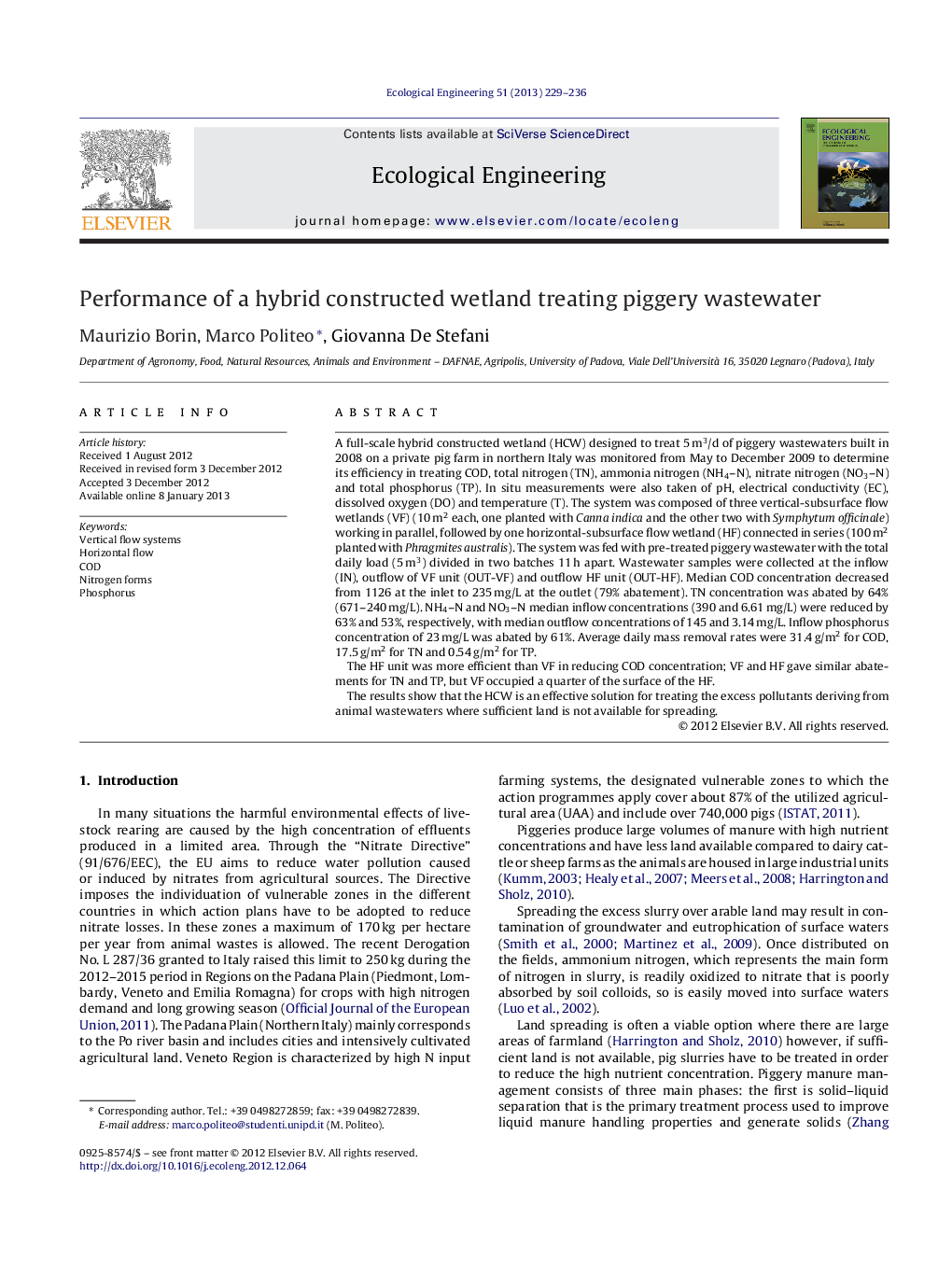| Article ID | Journal | Published Year | Pages | File Type |
|---|---|---|---|---|
| 4389848 | Ecological Engineering | 2013 | 8 Pages |
A full-scale hybrid constructed wetland (HCW) designed to treat 5 m3/d of piggery wastewaters built in 2008 on a private pig farm in northern Italy was monitored from May to December 2009 to determine its efficiency in treating COD, total nitrogen (TN), ammonia nitrogen (NH4–N), nitrate nitrogen (NO3–N) and total phosphorus (TP). In situ measurements were also taken of pH, electrical conductivity (EC), dissolved oxygen (DO) and temperature (T). The system was composed of three vertical-subsurface flow wetlands (VF) (10 m2 each, one planted with Canna indica and the other two with Symphytum officinale) working in parallel, followed by one horizontal-subsurface flow wetland (HF) connected in series (100 m2 planted with Phragmites australis). The system was fed with pre-treated piggery wastewater with the total daily load (5 m3) divided in two batches 11 h apart. Wastewater samples were collected at the inflow (IN), outflow of VF unit (OUT-VF) and outflow HF unit (OUT-HF). Median COD concentration decreased from 1126 at the inlet to 235 mg/L at the outlet (79% abatement). TN concentration was abated by 64% (671–240 mg/L). NH4–N and NO3–N median inflow concentrations (390 and 6.61 mg/L) were reduced by 63% and 53%, respectively, with median outflow concentrations of 145 and 3.14 mg/L. Inflow phosphorus concentration of 23 mg/L was abated by 61%. Average daily mass removal rates were 31.4 g/m2 for COD, 17.5 g/m2 for TN and 0.54 g/m2 for TP.The HF unit was more efficient than VF in reducing COD concentration; VF and HF gave similar abatements for TN and TP, but VF occupied a quarter of the surface of the HF.The results show that the HCW is an effective solution for treating the excess pollutants deriving from animal wastewaters where sufficient land is not available for spreading.
► Median abatements were: 79% for COD, 64% for TN, 63% for NH4–N, and 61% for TP. ► For COD, the HF unit was more efficient than VF in reducing concentration. ► For TN and TP, VF and HF gave similar abatements. ► Average daily mass removal rates for COD was 31.4 g/m2, for TN 17.5 g/m2.
